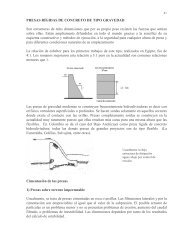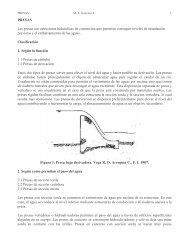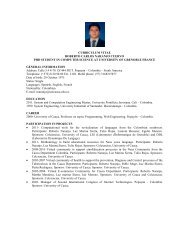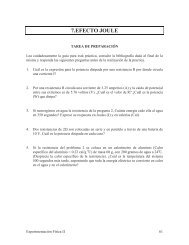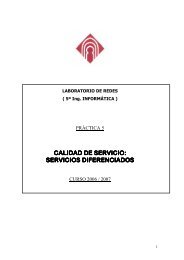Advice for the Project Management Professional (PMP)
Advice for the Project Management Professional (PMP)
Advice for the Project Management Professional (PMP)
Create successful ePaper yourself
Turn your PDF publications into a flip-book with our unique Google optimized e-Paper software.
Licensed to:<br />
438<br />
Glossary<br />
checklist — A list of items to be noted or<br />
consulted.<br />
closing processes — The actions that involve<br />
<strong>for</strong>malizing acceptance of <strong>the</strong> project or phase<br />
and bringing it to an orderly end.<br />
communications management plan — A document<br />
that guides project communications.<br />
compromise mode — The conflict-handling<br />
mode that uses a give-and-take approach to<br />
resolve conflicts.<br />
con<strong>for</strong>mance to requirements — The process<br />
of ensuring that <strong>the</strong> project’s processes and<br />
products meet written specifications.<br />
confrontation mode — The conflict-handling<br />
mode that involves directly facing a conflict<br />
using a problem-solving approach that allows<br />
affected parties to work through <strong>the</strong>ir<br />
disagreements.<br />
constructive change orders — Oral or written<br />
acts or omissions by someone with actual or<br />
apparent authority that can be construed to<br />
have <strong>the</strong> same effect as a written change order.<br />
contingency plans — The predefined actions<br />
that <strong>the</strong> project team will take if an identified<br />
risk event occurs.<br />
contingency reserves or contingency<br />
allowances — The funds held by <strong>the</strong> project<br />
sponsor that can be used to mitigate cost or<br />
schedule overruns if unknown risks occur.<br />
contract closure — The completion and settlement<br />
of contracts, and resolution of any open<br />
items.<br />
contract statement of work (SOW) —A<br />
description of <strong>the</strong> work that is to be purchased.<br />
contracts — The mutually binding agreements<br />
that obligate <strong>the</strong> seller to provide <strong>the</strong> specified<br />
products or services, and obligate <strong>the</strong> buyer to<br />
pay <strong>for</strong> <strong>the</strong>m.<br />
control chart — A graphic display of data that<br />
illustrates <strong>the</strong> results of a process over time.<br />
Copyright 2009 Cengage Learning. All Rights Reserved.<br />
May not be copied, scanned, or duplicated, in whole or in part.<br />
cost baseline — A time-phased budget that<br />
project managers use to measure and monitor<br />
cost per<strong>for</strong>mance.<br />
cost-reimbursable contract — A contract that<br />
involves payment to <strong>the</strong> seller <strong>for</strong> direct and<br />
indirect actual costs.<br />
crashing — A technique <strong>for</strong> making cost and<br />
schedule trade-offs to obtain <strong>the</strong> greatest<br />
amount of schedule compression <strong>for</strong> <strong>the</strong> least<br />
incremental cost.<br />
critical chain scheduling — A method of<br />
scheduling that takes limited resources into<br />
account when creating a project schedule and<br />
includes buffers to protect <strong>the</strong> project completion<br />
date.<br />
critical path — The series of activities that<br />
determine <strong>the</strong> earliest time by which <strong>the</strong><br />
project can be completed; it is <strong>the</strong> longest path<br />
through <strong>the</strong> network diagram and has <strong>the</strong> least<br />
amount of slack or float.<br />
critical path method (CPM), orcritical path<br />
analysis — A network diagramming technique<br />
used to predict total project duration.<br />
deliverable — A product or service produced<br />
or provided as part of a project.<br />
dependency, orrelationship — The sequencing<br />
of project activities or tasks.<br />
directives — The new requirements imposed<br />
by management, government, or some external<br />
influence.<br />
discount factor — A multiplier <strong>for</strong> each year<br />
based on <strong>the</strong> discount rate and year.<br />
discount rate — The rate used in discounting<br />
future cash flows.<br />
discretionary dependencies — The dependencies<br />
that are defined by <strong>the</strong> project team.<br />
duration — The actual amount of time spent<br />
working on an activity plus elapsed time.<br />
earned value (EV) — An estimate of <strong>the</strong> value<br />
of <strong>the</strong> physical work actually completed.



